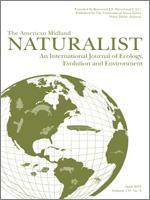Understanding the reproductive ecology of stream fishes is critical for their conservation. Nest association is a common reproductive interaction among minnows (Cyprinidae) in which individuals of ‘associate' species spawn in nests of host species. Nest association behavior is nearly obligate for ‘strong' associates, while it is facultative for other species. Facultative associates may begin spawning before host nesting begins and then visit host nests either to continue spawning or to feed. This is particularly evident for Central Stoneroller Campostoma anomalum, which frequently visits nests of host Bluehead Chub Nocomis leptocephalus but also spawns separately. We monitored the reproductive condition (gonadosomatic index, GSI) of minnows at longitudinally-positioned sites in a central Appalachian stream throughout the spring and summer of 2013. We also conducted daily visual nesting surveys to document chub spawning behavior and reproductive interactions that occurred on their nests. We used nonmetric multidimensional scaling (NMDS) to compare weekly GSI patterns of reproductive groups and hypothesized stoneroller GSI would be more similar to facultative associates than chubs. We also used piecewise regression to identify temporal thresholds in GSI (indicating the onset of spawning) in relation to the visually-confirmed onset of chub spawning. NMDS results suggest clear differences in reproductive condition between chubs/strong associates and stoneroller/weak associates. The onset of chub spawning was contained within the GSI thresholds estimate of strong associates but not of other groups. Stonerollers began spawning several weeks before chubs but were documented to be excavating pits on each nest. Paired together, the GSI and behavioral observations suggest stoneroller does not require chub nests for spawning and may exploit nests as a trophic resource if no eggs are contributed. Moreover, these results demonstrate the close reproductive link between some symbiotic species and their hosts that is required for successful reproduction.
How to translate text using browser tools
1 April 2018
Disentangling Reproductive Interactions among Communal Spawning Minnows Using Reproductive Condition and Visual Observations
Stephen P. Floyd
ACCESS THE FULL ARTICLE
It is not available for individual sale.
This article is only available to subscribers.
It is not available for individual sale.
It is not available for individual sale.

The American Midland Naturalist
Vol. 179 • No. 2
April 2018
Vol. 179 • No. 2
April 2018




